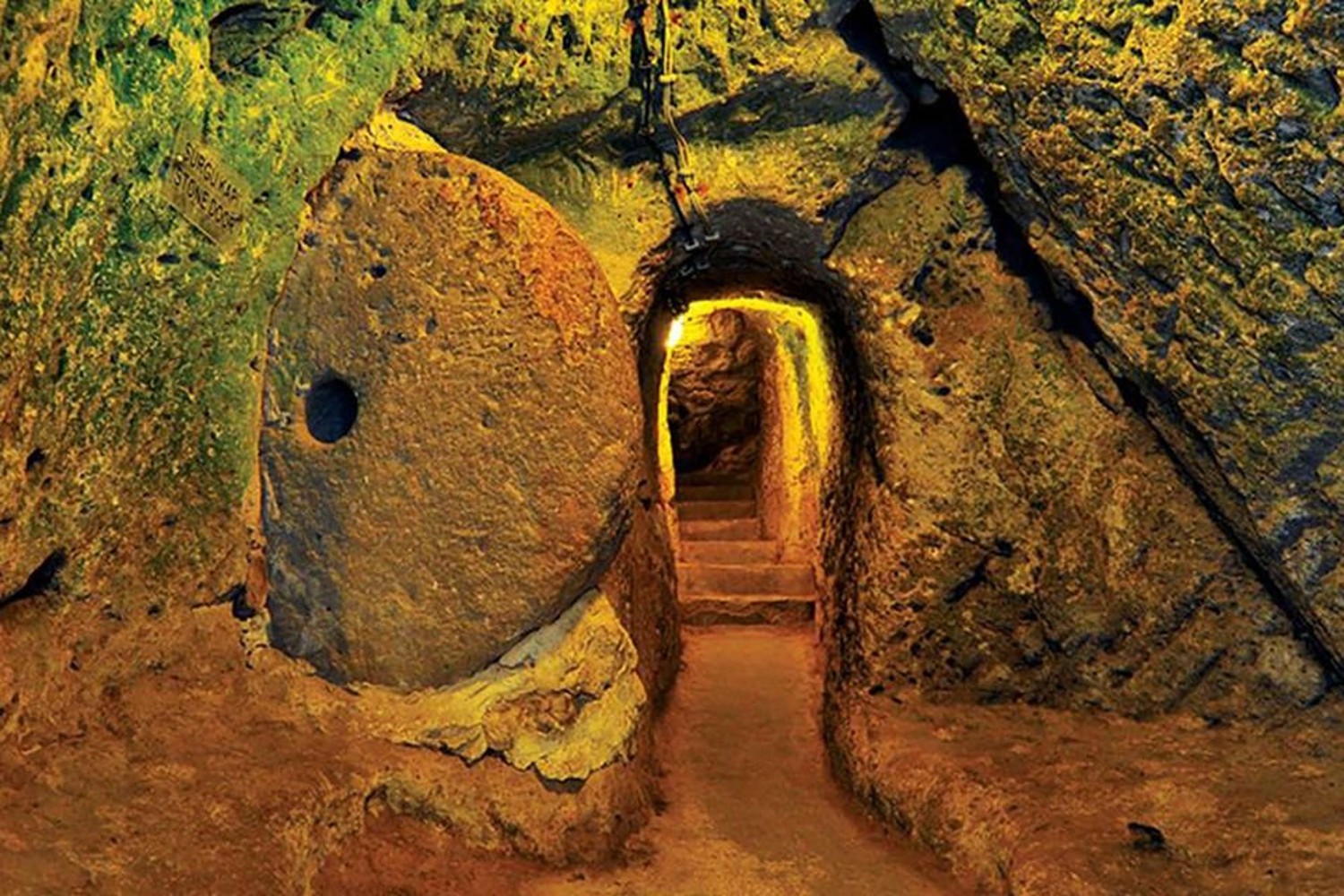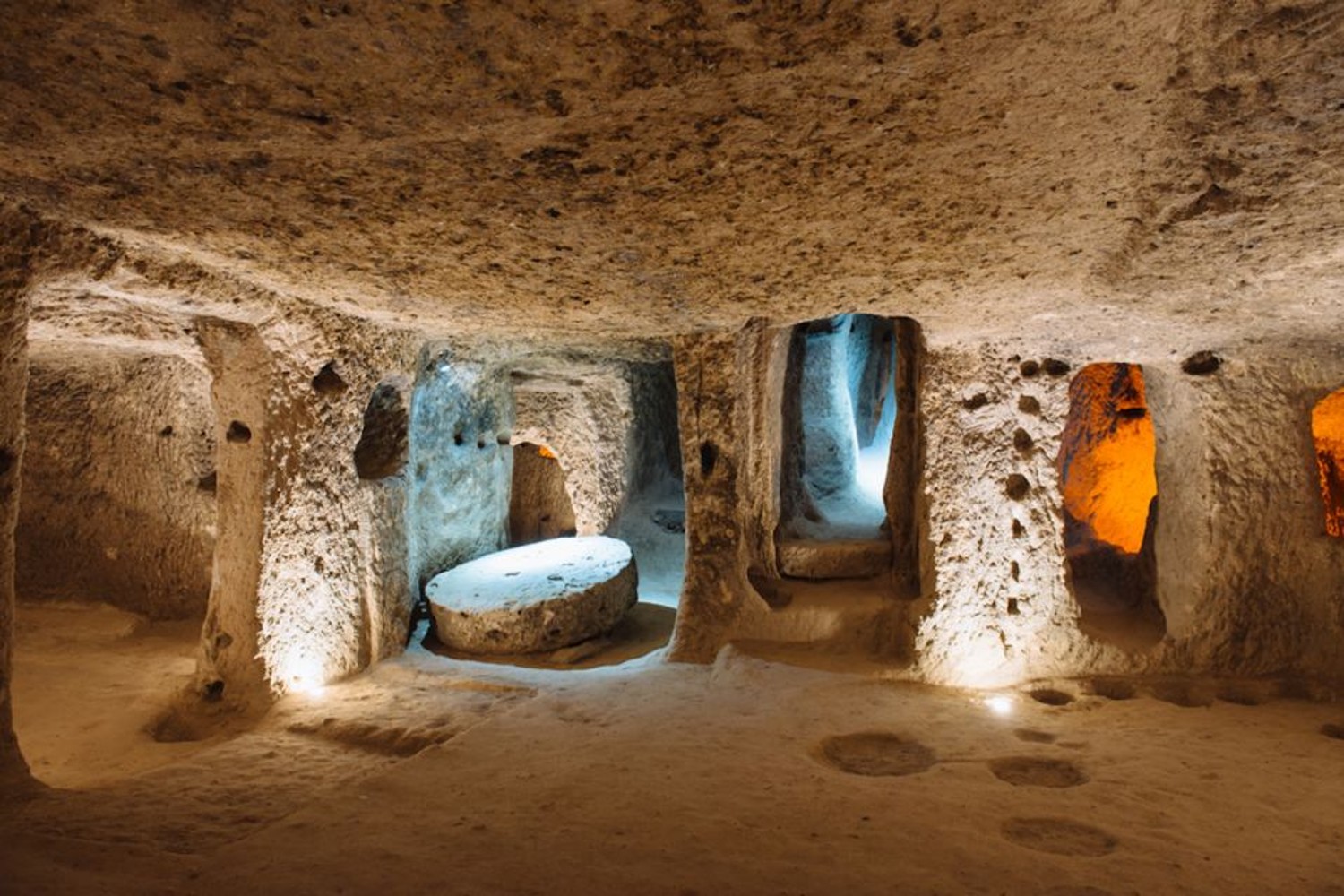CappadociaCappadocia ActivitiesCappadocia Jeep SafariDerinkuyu underground cityUnderground Cities Cappadociawhat to do in cappadociawhere to go in cappadocia
Derinkuyu Underground City - Cappadocia
Where is Derinkuyu Underground City

Derinkuyu has become a popular destination recently, attracting thousands of tourists everyday to its underground city, churches, mental hospital and historical legacy. The underground city was discovered by chance and it was opened to the public by the Directorate of Antiquities and Museums in 1965. It is believed that the Hittites, the Romans, the Byzantines and even the Proto-Hittites lived in this underground city, which is considered to be the 9th wonder of the ancient world by the visitors. However, the common belief is that the first levels were used by the Proto-Hittites and in time the peoples of other tribes hollowed out the lower floors of this 8-story underground city.
There are 36 other underground cities in the Cappadocia region. They were safe places for the early Christians both to spread the new faith secretly and to worship freely away from persecution. Later the same places were used as shelters during the Arab raids in the 6th and 7th centuries.
What is there in Derinkuyu underground City
On the first and the second floors are the missionary school, the baptism pool, the kitchen, food depots, bedrooms, dining rooms, wine cellars and stables. The hiding places, tunnels and depots for weapons are found on the 3rd and 4th floors. When the town was attacked, the townspeople escaped through these tunnels.
It is believed that a tunnel on the 3rd floor once reached the underground city in Kaymaklı, 9 km away. Unfortunately, the air shafts for this tunnel opened up to land under cultivation, and have been filled with stones and soil.
There is some indication that some floors of the underground city were once used as shelters. These include the millstone doors between some tunnels. During an attack the tunnels could be blocked from the inside with these millstones and the people would descend to the shelters.These millstone doors could not be opened from outside. Using the holes in the centre of the millstone doors, the residents of the underground city could defend themselves against the danger coming from outside.
On the lowest levels are water wells, secret escape shatts, a church, a meeting hall, a confession place, a grave and air shafts.
In the underground city of Derinkuyu, there are 52 other air shafts, the depths of which vary between 70 to 85 meters depending on the angle of the surface. Shafts were dug downwards for water wells and those dug upwards provided fresh air to all the floors.The townspeople met their water needs from these wells using pulley wheels.
The cross-planed church at the last level is 10 m in width, 25 m in length and 2,5 m in height.
Opposite the church is a meeting hall with 3 columns. When cleaning up the underground city, a tomb, now empty, was found at the end of the tunnel to the right of this hall. It is reported that the skeleton found in the tomb was sent up to Ankara for analysis. There are about 450-500 underground cities under the town of Derinkuyu and about 600 openings leading down to those. Since some of these openings are presently used houses, parts of the first floors of some underground cities are used as storage places. The access to the floors further down is difficult as they are filled in with dirt. Some of these underground developments go down 18-20 floors.

The Derinkuyu underground city covers an area of 4 km square and is considered to be big enough to house 2000 families. The average number of inhabitants of this underground city was 10.000.
This is an amazing quest considering the limited technology available hundreds of years ago and shows how much human ingenuity and manpower can achieve. Exactly 100,000 workers worked for the construction of the pyramids in Egypt. One wonders how many people worked hollowing out the Derinkuyu underground city and how many lost their lives? The answers to these questions are still to be found.

How big is it?
The Derinkuyu underground city covers an area of 4 km square and is considered to be big enough to house 2000 families. The average number of inhabitants of this underground city was 10.000.
This is an amazing quest considering the limited technology available hundreds of years ago and shows how much human ingenuity and manpower can achieve. Exactly 100,000 workers worked for the construction of the pyramids in Egypt. One wonders how many people worked hollowing out the Derinkuyu underground city and how many lost their lives? The answers to these questions are still to be found.








0 comments